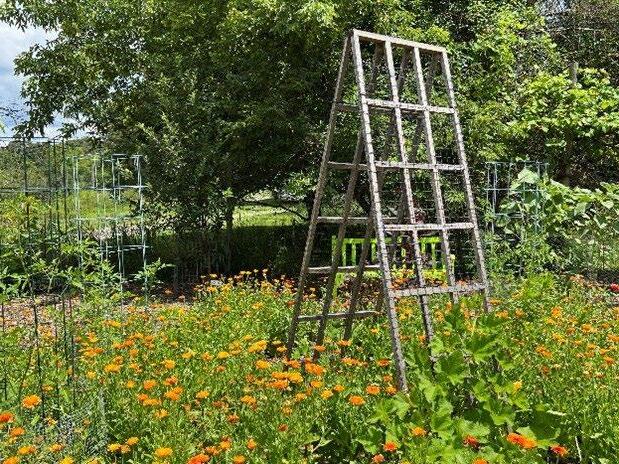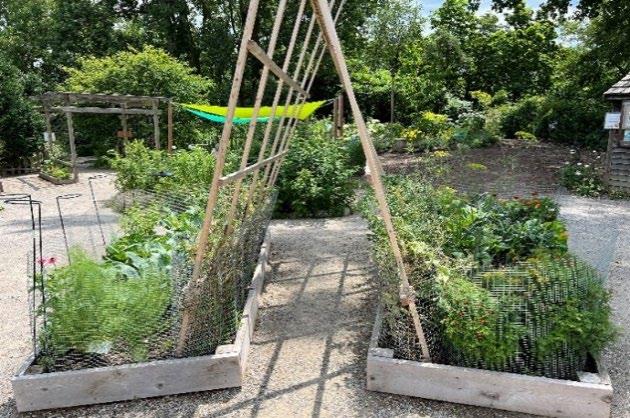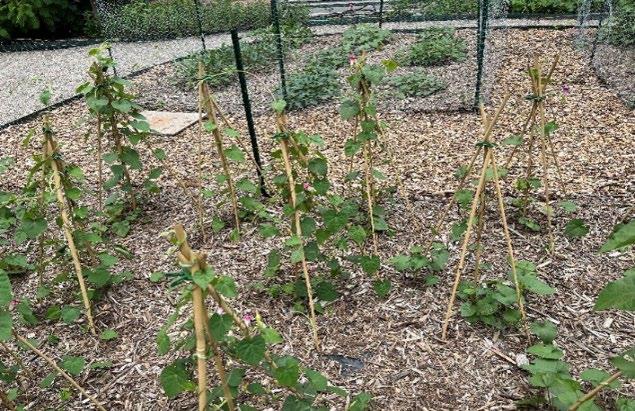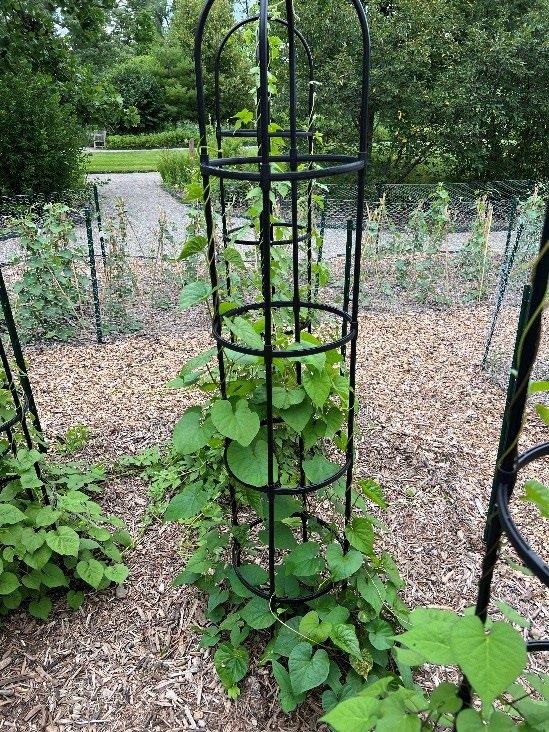




Vertical gardening is the practice of in-ground gardening that grows plants up a trellis, arch, or vertical support. It can be used in container gardening by growing vertically. Some vertical gardens employ hydroponics to feed their plants. Vertical gardening is a measure to use space efficiently.
• Maximizes space and food production
• Raises plants off the ground for better air circulation, pest control, and improved plant health.
• Creates beautiful compact spaces.
• Uses unoccupied areas.
• Makes watering easier, especially in spreading plants
• Allows for easier harvest of produce

Vertical gardening has many advantages, such as maximizing space, increasing food production, and improving plant health.


How much space do you need for a vertical garden?
You can grow vertically in any space. There are many different options for growing plants in unused spaces in a garden or even inside and outside of structures. You can grow in your yard, on a fence, on a patio, or even inside your house.
Vining plants are the first type of plants that work well for vertical growth since they will easily grow up a trellis. However, any plant can be grown vertically with the proper setup
One of the biggest benefits of vertical gardening is that you can use many different resources available to you For example, you can upcycle an old fence, twine, cans, bottles, buckets, PVC pipes, and branches. Really, anything that you can use as a trellis to create a vertical growing space with good support will work. Premade options include plant cages, stackable planters, shelving, wall planting pockets, arches, gazebos, and so many more. Creating mounds is an option to allow more surface area for plants to grow, especially for deep-rooted plants, such as asparagus, which may not grow as well in a container. You can make a vertical garden to fit any budget or space.
An example of an easy, premade vertical system you can purchase is the stacking vertical towers with a worm composter built in. Figure 1 illustrates this type of vertical tower. It can hold 50–60 plants in one tower! Many videos are available online to explain how to use a garden tower. For example, “How to Use the Garden Tower for Composting” (Burpee, 2015) explains how a garden tower makes its own compost. Many suppliers offer garden tower products; visit your local garden center or search “garden tower” in your browser

Figure 2 provides some additional ideas for ways to create a vertical garden.



• Vertical Gardening Using Trellises, Stakes, and Cages (Settlage & Hessler, 2022).
• Growing Up: Vertical Gardening Provides More Room for Crops (K-State Research and Extension News, 2021)
• Garden Techniques for Limited Space (Ogden Botanical Garden, n.d.)
• Building a Vertical Hydroponic Tower (Singh & Dunn, 2021).
Smart Foodscapes (usu.edu/smart-foodscapes) Learn more by scanning the QR code.


USDA – National Institute of Food and Agriculture (NIFA) – Sustainable Agricultural Systems (SAS) Grant #2021-69012-35952
All photos were provided by Rita Hagevik
Burpee Gardening. (2015). How to use the garden tower for composting [Video]. YouTube. https://www.youtube.com/watch?v=AXq15IgEGIY
K-State Research and Extension News. (2021, April 1). Growing up: Vertical gardening provides more room for crops. Kansas State University. https://www.ksre.kstate.edu/news/stories/2021/04/vertical-gardening-provides-more-room-for-crops.html
Ogden Botanical Garden. (n.d.). Garden techniques for limited space Utah State University Extension. https://extension.usu.edu/ogdenbotanicalgardens/edible-garden-techniques
Settlage, K., & Hessler, A. (2022, December 12). Vertical gardening using trellises, stakes, and cages [HORT-189NP]. Virgina Cooperative Extension, Virginia Tech, and Virginia State University. https://www.pubs.ext.vt.edu/HORT/HORT-189/HORT-189.html
Singh, H. & Dunn, B. (2021, February). Building a vertical hydroponic tower [Fact sheet]. Oklahoma State University Extension. https://extension.okstate.edu/fact-sheets/building-a-vertical-hydroponictower.html
In its programs and activities, including in admissions and employment, Utah State University does not discriminate or tolerate discrimination, including harassment, based on race, color, religion, sex, national origin, age, genetic information, sexual orientation, gender identity or expression, disability, status as a protected veteran, or any other status protected by University policy, Title IX, or any other federal, state, or local law. Utah State University is an equal opportunity employer and does not discriminate or tolerate discrimination including harassment in employment including in hiring, promotion, transfer, or termination based on race, color, religion, sex, national origin, age, genetic information, sexual orientation, gender identity or expression, disability, status as a protected veteran, or any other status protected by University policy or any other federal, state, or local law. Utah State University does not discriminate in its housing offerings and will treat all persons fairly and equally without regard to race, color, religion, sex, familial status, disability, national origin, source of income, sexual orientation, or gender identity. Additionally, the University endeavors to provide reasonable accommodations when necessary and to ensure equal access to qualified persons with disabilities. The following office has been designated to handle inquiries regarding the application of Title IX and its implementing regulations and/or USU’s non-discrimination policies: The Office of Equity in Distance Education, Room 400, Logan, Utah, titleix@usu.edu, 435-797-1266. For further information regarding non-discrimination, please visit equity.usu.edu, or contact: U.S. Department of Education, Office of Assistant Secretary for Civil Rights, 800-421-3481, ocr@ed.gov or U.S. Department of Education, Denver Regional Office, 303-844-5695 ocr.denver@ed.gov. Issued in furtherance of Cooperative Extension work, acts of May 8 and June 30, 1914, in cooperation with the U.S. Department of Agriculture, Kenneth L. White, Vice President for Extension and Agriculture, Utah State University. May 2024, Utah State University Extension